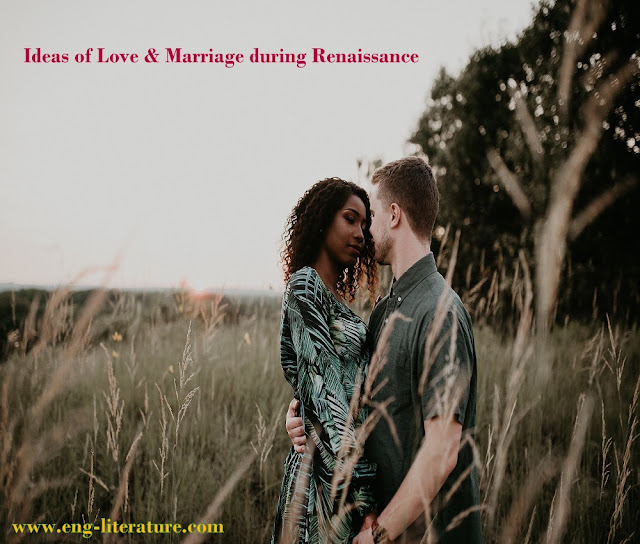During the Renaissance, Europeans saw love and marriage as
two important, but very different, parts of life. Poets described love as an
overpowering force, both spiritual and sexual. For most people, however,
marriage was a more practical matter. As the basic building block of society,
it involved the expectations of families and communities, not just the wishes
of two individuals. Although marriage was the normal state of life for most
people, many remained unmarried for either practical or religious reasons.
The idea of romantic love took shape in the centuries leading
up to the Renaissance. The literature of the Middle Ages developed
the concept of courtly love, which treated the beloved as a pure ideal.
Two Italian writers of the 1300s, Dante Alighieri and Petrarch, drew
on this tradition in their poetry. Each of them presented a beloved woman as a
source of inspiration and a symbol of female perfection. European poetry in the
following centuries followed their lead, treating love as an experience above
and beyond ordinary life. Some poets saw sexual desire as a vital part of love,
while others presented love as a pure and selfless emotion. John Donne’s “The Good Morrow”, celebrates love and sexuality in
marriage. Some others viewed "platonic" love as the highest
and noblest form of love. They saw love as a path to the divine, which was the
source of the beloved's beauty. Sydney’s Astophel
and Stella, Spenser’s Amoretti , Shakespearean
sonnet suggest spiritual aspects of love.
The Renaissance view of marriage had little to do with love.
Most people believed that the perfect love of the poets could not exist
alongside the everyday concerns of marriage. The reality, of course, was more
complicated. Although practical matters played a major role in marriage, some
rebels insisted on marrying for love.
At the highest levels of society, a marriage was not just a
bond between two people but a union of two families and their fortunes.
Marriages between ruling families could seal political alliances and even unite
empires. Therefore, among the upper classes, parents took the lead in arranging
marriages.
Courtship led to betrothal, which until the late 1600s was an
important step in the process of getting married. The legal requirements for a
marriage were a confusing mix of church law, local rules, and custom until the
mid-1500s. After that time, the church became a legal part of the marriage
ceremony.
~~~~~*~~~~~












0 Comments
Post a Comment